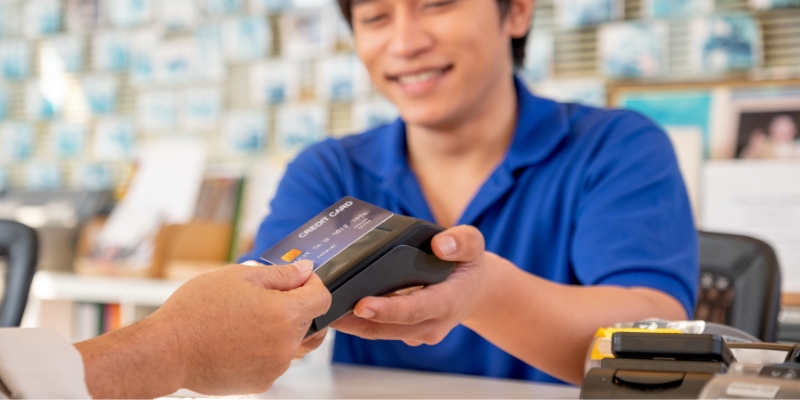EMV Chipped Cards

What is EMV?
EMV stands for "Europay, MasterCard, and Visa", the three companies that created the chipped card standard in the 90's. This protocol is now managed by EMVco, which also includes JCB, American Express, and Discover among others.
EMV chip technology is implemented on both credit AND debit cards, and PIN numbers are assigned to EMV credit cards as well as debit cards. An EMV card has an embedded computer chip that facilitates secure payment processing.
How EMV Works
Traditional payment cards use a magnetically coded strip, pioneered by IBM in the late 60's. The strip on a payment card contains an unencrypted digital representation of the card number and expiration date, sometimes more. All magnetic-strip cards operate similarly; a hotel keycard or gift card could be re-coded with payment card information easily and used at a Point-of-Sale (POS) like gas pump, restaurant checkout, ATM Machine, etc. The chip in an EMV card contains similar information, but also additional parameters to help facilitate a secure transaction.
Traditional cards are swiped; this passes the magnetic strip by a small sensor where card data is read, just like a VCR. CHIPPED CARDS ARE INSTEAD "DIPPED". The card is partially inserted into a reader at checkout and then the POS or cashier will indicate when the card may be removed. Gas pumps and ATM machines may physically hold onto the card until the transaction is complete, then release the card. This process may take several seconds longer to complete than then traditional swipe.
When an EMV card is dipped, the chip helps transform the current transaction into a unique, one-time-only set of data that is sent to the card processor or bank through the POS vendor. The processor or bank is able to determine if this data is legitimate, and if so, fund a payment to the vendor.
What Are EMV's Benefits?
EMV protects against data breaches where the card, number, or other magnetic strip data is stolen. From 2013 to 2016, there have been several card breaches compromising hundreds of millions of cards in the United States, including but not limited to breaches at Home Depot, Target, Hilton, Marriot, Michaels, Dairy Queen, Goodwill, Jimmy John's, Kmart, Staples, Hyatt, CiCi's Pizza, and Wendy's. EMV addresses this type of fraud.
If the information stored on a traditional card's magnetic strip is captured, it can be used fraudulently to complete online purchases at websites that don't require the security code printed on the back of the card. Compromised magnetic strip card data can also be cheaply reproduced onto nearly any card with a magnetic strip and used at a POS. Criminals buy items of high value - especially gift cards - then sell them for less than face value to convert stolen card numbers into cash. Organized criminals and gangs have for some time now been involved in stolen card data.
EMV cards support three payment modes:
- Automatic - small purchases may be approved immediately without card holder intervention
- Chip and Signature - a traditional signature is required to complete the transaction
- Chip and PIN - a PIN, in some cases verify by the card's chip, is required to complete the transaction
Any one of those modes above protects funds from a data breach at the vendor. If chipped card data is breached in transit, that unique data can never be reused to fund another purchase, unlike traditional card data. However, only the Chip and PIN mode protects against physical card theft. ALWAYS REPORT STOLEN OR MISSING CARDS!
EMV Limitations
The benefits of EMV technology are limited to transactions where the chip is utilized (dipped). Chipped cards may also feature a traditional magnetic strip that is intended for use if an EMV-compatible card reader is not available. It is important to remember that ANY TIME AN EMV CARD IS SWIPED, THE CHIP IS NOT USED AND THERE ARE NO ADDITIONAL PROTECTIONS OVER A TRADITIONAL CARD.
The same limitation applies online: If the static card number embossed into a chipped card is used to complete an online transaction, and that number is stolen, it can potentially be re-used to withdrawal funds from your account.
If the magnetic strip or embossed number on an EMV card is compromised, the EMV chip remains secure; however the entire card must be replaced. Chipped cards are more expensive to manufacture, so avoid swiping a chipped card!
